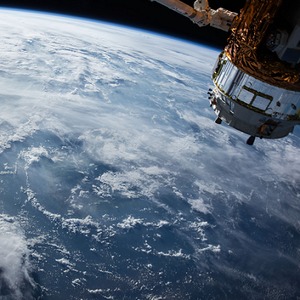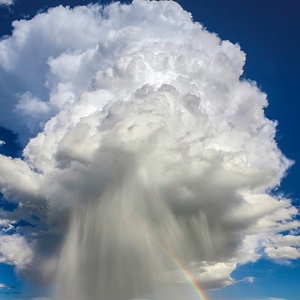

Forecasting with Isotopes
For such a seemingly simple substance, water continues to yield new scientific discoveries with each passing year. The latest discovery from researchers at The University of Tokyo’s Institute of Industrial Science concerns specific types of water made of different isotopes of hydrogen and oxygen. For the first time, researchers were able to detect the different isotopes present in water vapor in the atmosphere using satellites and then were successful in using this data to improve computer weather forecasts.
All water, whether in solid, liquid, or gas form, is made up of molecules containing two hydrogen atoms and one oxygen atom. However, not all naturally-occurring hydrogen and oxygen atoms are the same. Some hydrogen atoms instead of just having one proton also have a neutron, some even contain two neutrons. Oxygen can also have a varying amount of neutrons to give three naturally occurring oxygen isotopes. The water molecules made up of heavier isotopes of hydrogen and oxygen owing to their heavier atomic mass prefer to stay in a solid or liquid state and it also takes slightly more energy for heavier water isotopes to evaporate.
Up until recently, measurements of the water isotopes present in the atmosphere and in precipitation have been relatively scarce compared with such variables as temperature and wind speed. However a series of satellites launched by the European Space Agency, called MetOp, contain a sensor called the Infrared Atmospheric Sounding Interferometer, which is able to discern the different isotopes at a height of 4.5 km, from 60°S to 60°N latitude, twice daily.
Inputting this isotope data into a computer weather model, the researchers were able to improve forecasts of air temperature and specific humidity compared with a weather model which didn’t incorporate such data. While the improvement was relatively modest, at just a few percentage points in this study, as monitoring of isotopes by satellites becomes more advanced in the future, the team expects further improvement in weather forecasting models that incorporate such data.








